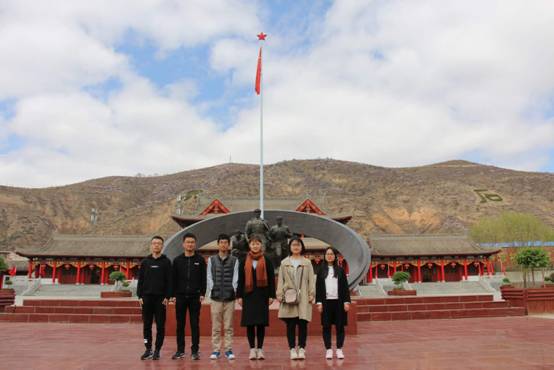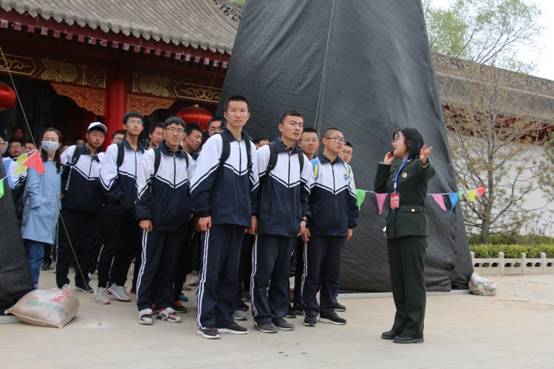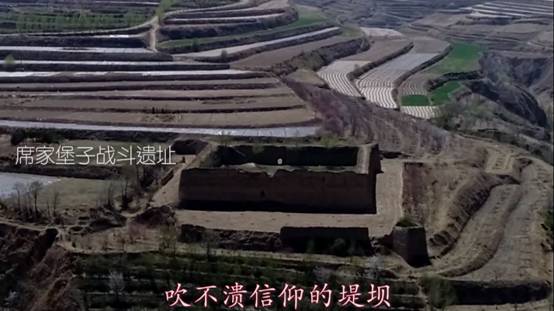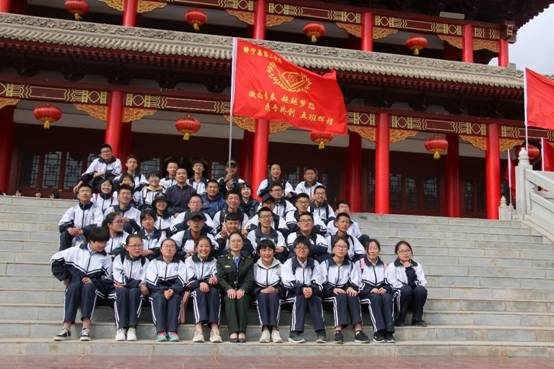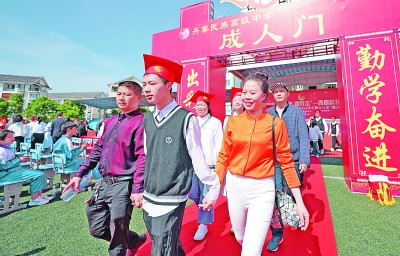
At the adult ceremony held in Danzhai County, Qiandongnan Miao and Dong Autonomous Prefecture, Guizhou Province, high school students who have reached the age of 18 walked through the "adult gate" with their parents. Xinhua news agency
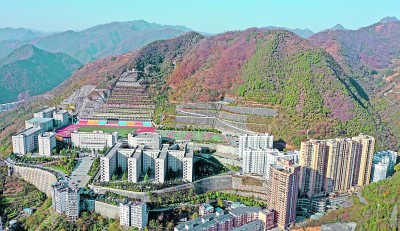
Baihe Senior High School in Ankang City, Shaanxi Province is called "a school hanging halfway up the mountain". As a model school for ordinary senior high schools in Shaanxi Province, the school adheres to the principle of "five educations simultaneously" and promotes students’ all-round development. Xinhua news agency
[Endeavour, New Journey, New Era, Great Change]
The parents of Liu Ying, a senior three student of Huize No.1 Middle School in Huize County, Qujing City, Yunnan Province, witnessed the changes of the school: "Compared with 10 years ago, the campus area of Huize No.1 Middle School has expanded, the equipment of classrooms and dormitories has been updated, the level of teachers has improved, and it has done better and better in serving and educating people." The changes in this county are the epitome of the rapid development of high school education in China.
High school education is an important part of the national education system and plays a key role in talent training. In 2010, the Outline of the National Medium-and Long-Term Education Reform and Development Plan (2010— 2020), accelerating the popularization of high school education has become a clear goal.
The Fifth Plenary Session of the 18th CPC Central Committee clearly put forward that "universal high school education".
The report of the 19th National Congress of the Communist Party of China once again made it clear that it is necessary to "popularize high school education and strive to make every child enjoy a fair and quality education".
From "basically popularizing high school education" to "popularizing high school education" is the goal pursuit of the development of high school education in a new stage, which shows that the CPC Central Committee attaches great importance to and is determined to accelerate the popularization of high school education. This is an important measure to further improve the overall quality of the people, the competitiveness of the labor force and build a strong country with human resources after popularizing nine-year compulsory education.
The statistical data of education in 2021 shows that the gross enrollment rate of high school education has increased to 91.4%. The development of high school education is not only on the fast track, but also on the stage of high-quality development.
In 2021, there were 14,600 ordinary high schools in China. There are 9,049,500 students enrolled and 26,050,300 students enrolled. There are 7294 secondary vocational schools in China.
In 2021, the gross enrollment rate in high school was 91.4%.
2016 — In 2020, the central government invested a total of 39.07 billion yuan, focusing on supporting poor areas in the central and western regions to improve the conditions for running ordinary high schools.
Underpinning: guarantee the basic short board
“‘ Put quality education at the doorstep of the people ’ Become the belief of the whole school faculty! " Bian Chunlong, vice president of No.12 Middle School in Urumqi, Xinjiang, told the reporter, "The changes in these 10 years cannot be separated from the input and support of the state and the government."
In this garden-like campus stands four atmospheric teaching buildings; The classroom is equipped with an integrated blackboard of "internet plus Intelligent Touch", so that children can watch the live broadcast of "Tiangong Classroom" synchronously and interactively with Beijing in the classroom. A dynamic team of teachers is growing rapidly, and school teachers tap their own expertise, such as pastry making, 3D creative design, opera singing, calligraphy and Go, and various forms of community classes emerge as the times require … …
In April, Paitou Middle School in Zhuji City, Zhejiang Province was full of spring. Indus early hair, wheatgrass full of branches; In the academy, students sit quietly at their desks.
School History Museum, Tongren Building and Wutong Avenue are all lined with trees and flowers, which is a good place to study. Attentive listening in class, constant questioning after class, and cooperation and competition among classmates are the appearance of diligence.
After studying, more delicious food can’t live up to: braised pork, big noodles, big chicken legs … … You can choose with peace of mind; The dormitory is spacious and comfortable, with a separate bathroom and hot water … … A small world has become a "small harbor" for students.
Like Urumqi No.12 Middle School, this century-old school in Paitou Town, Zhuji is also brand-new.
Wang Huifeng, vice president of Paitou Middle School in Zhuji City, said: In 2017, Tongwen Academy with an investment of more than 13 million yuan was delivered; 2019— In 2021, more than 40 million yuan was invested in the campus upgrading project. With the support of Zhuji Municipal Government, 5.5 million yuan was invested in the construction of smart campus.
"In the early years, our rural teachers tried to get into the city to teach as much as possible; Now, there are no teachers to take the exam. After all, there is not much difference between the city and the countryside. " Wang Huifeng said.
As a manager, the change that Wang Huifeng felt was real. "In the past, I was worried about money and worried about various funds. Now, I just want to run the school well and improve the quality of teaching. "
During the "Thirteenth Five-Year Plan" period, the central government invested a total of 39.1 billion yuan in the construction of ordinary high schools, and various localities increased their investment, building, rebuilding and expanding 4,570 ordinary high schools nationwide. Large classes and super-large classes have always been the "pain point" of ordinary high school education. All localities have implemented special plans to eliminate large classes in ordinary high schools in light of actual conditions, and accelerated the elimination of large classes in ordinary high schools.
Poverty-stricken areas in the central and western regions are the biggest shortcomings in popularizing high school education. Faced with the difficulties faced by the development of the county, experts pointed out: "High school education is to build a modern education power ‘ Soft waist ’ , this ‘ Waist ’ Without straightening up, it will be difficult to realize the dream of strengthening the country through education, and high school education will also be difficult ‘ Strengthen muscles and bones ’ 。”
In 2021, the "Government Work Report" proposed "strengthening the construction of county high schools". At the end of 2021, the "Fourteenth Five-Year Plan" (hereinafter referred to as the "Promotion Action Plan") was released, proposing that the state should continue to implement projects to improve the running conditions of ordinary high schools, with emphasis on supporting the improvement of basic running conditions in counties.
A series of measures point to "strengthening the waist" and "strengthening the muscles and bones". People further realize that popularizing high school education is an urgent need to adapt to the transformation and upgrading of China’s economic structure and improve the education years of the labor force, and it is also a basic project to further improve the overall quality of the people and build a strong country with human resources.
"The school introduces outstanding graduates from colleges and universities all over the country every year, and focuses on training after entering the job." Looking ahead, Wang Huifeng is more confident.
Improving quality: strengthening teachers to make characteristics
In the impression of Yedda Chiu, a middle school student in Huize County, Qujing City, Yunnan Province, the most unforgettable thing was the literary club activity held in the courtyard of Rongjia Ancestral Hall: under the guidance of the teacher, the students recited works under the osmanthus tree, ate fruits and shared cakes together.
"I am a child from the countryside. I cried when I was eating that day. I was moved by meeting such a good teacher and studying in such a warm campus." Yedda Chiu said.
Where do good teachers come from?
Zhang Hong, secretary of the Education and Sports Working Committee of Huize County, Qujing City, Yunnan Province, and director of the County Education and Sports Bureau, said that the county-level finance arranges 8 million yuan each year to reward collectives and individuals who have made outstanding contributions to the development of education, especially the development of high school education. The implementation of special government subsidies to enhance teachers’ sense of happiness, acquisition and honor, as well as the separation of husband and wife related to the stability of the teaching staff, have all been included in the agenda.
In 2017, the plan for the popularization of high school education (2017— 2020) (hereinafter referred to as the plan to tackle key problems) was released, and measures such as expanding educational resources, improving the funding mechanism and strengthening the construction of teachers were included.
The "Promotion Action Plan" proposes to implement the targeted training plan for outstanding teachers in underdeveloped areas in the central and western regions. Appropriately increase the proportion of intermediate and senior teachers in primary and secondary schools, appropriately tilt the positions of middle and senior teachers to counties, reasonably verify the total amount of performance pay in counties, and tilt the internal distribution of performance pay to outstanding talents.
Zhang Hong told reporters that in recent years, Huize County has recruited 2,802 new teachers, including 1,373 new teachers in 2020. And organize and plan to carry out comprehensive training for the county’s education management cadres and teachers, solve the problems such as the loss of outstanding principals and backbone teachers and the instability of the teaching staff, and improve the teaching staff as a whole.
Another brand of Suzhou No.6 Middle School is: Suzhou Art High School in Jiangsu Province. "Opposite to the north and south of Pingjiang Road, a famous historical street, it is adjacent to Humble Administrator’s Garden, Lion Forest and Suzhou Museum. The 400-year-old Ming-style ancient building in the school was later the former residence of Xu Naizhao, governor of Jiangsu Province in the Qing Dynasty. " As soon as Zhu Wenxue, secretary of the General Party Branch and president of Suzhou No.6 Middle School, tells the geographical location of the school, people can naturally perceive its cultural and artistic atmosphere.
Turn into a high school with artistic characteristics, and let Suzhou No.6 Middle School embark on the road of high-quality development of "art and literature go hand in hand".
The "attack plan" proposes to promote the diversified and distinctive development of schools. Deepen the curriculum reform of ordinary senior high schools, strengthen the construction of elective courses, make full use of off-campus educational resources to expand the breadth and depth of on-campus courses, and enhance the selectivity and suitability of courses.
Popularizing high school education and improving quality is the proper meaning. We should not only pay attention to the imbalance of high school education in rural areas and economically underdeveloped areas, but also pay attention to deepening the connotation development in areas where high school education is basically popularized, changing the homogenization tendency of thousands of schools and exploring various educational models. Chen Ruping, vice president of China Academy of Educational Sciences, said that high school types such as science and technology high schools, general vocational high schools, humanities and academic high schools, and art and sports high schools can be set up to guide the classified development of ordinary high schools and form an ecology for the healthy development of ordinary high schools in the region.
Spring breeze, write a picture. The willow trees on the shore are green, the bridges are flowing, the yingfei grass is long, the eaves are upturned, the peach is red, Li Bai and the winter jasmine is yellow.
Cultivate one’s morality, stand upright, and concentrate on thinking. Dancing with an upward artistic heart, growing up in time, has gradually become better from ignorance and achieved better self.
Wu Chenxi, a student from Suzhou No.6 Middle School, couldn’t help but say that when she walked into the art studio, the familiar and beautiful smell of pigments and pencils lingered in her nose, accompanied by the artistic seed buried in her heart … …
The development of high school education must take into account the needs of society and individuals. At present, the social division of labor is refined, the society’s demand for talents is increasingly multi-level and multi-specification, and the individual’s demand for personalized development is increasingly strong, which determines the diversification of educational objectives in ordinary high schools. Chen Ruping believes that it is necessary to explore various educational models from the perspective of educating people and promoting their all-round development.
Coordination: adjusting structure for development
Good news keeps coming.
On April 17th, the team of Libo Secondary Vocational School (hereinafter referred to as Libo Vocational School) in Qiannan Buyi and Miao Autonomous Prefecture of Guizhou Province won the first place in the provincial competition and got the tickets for the national competition in the 2022 Guizhou Vocational College Teacher-Student Skills Competition and the National Vocational College Skills Selection Competition.
On April 21st, Pan Xingpin, a 20-level post-00 girl majoring in mechanical and electrical engineering in Libo Vocational School, won the first place in the province in the "Electronic Circuit Assembly and Application" project of the secondary vocational school. She will also represent Guizhou Province in the National Vocational College Skills Competition.
It is not only the competitions that prove the strength of secondary vocational students, but also some students who study here have got the "reservation form" of the admission notice of high-quality higher vocational colleges in Guizhou Province in advance. Just as Wu Wanshen, Class 3 of 20 Auto Repair in Libo Vocational School, won the second prize in the provincial competition in the first year of secondary vocational school, he said: "I chose the right school and the right major. Under the hard cultivation of teachers, with their own hard work, they have obtained the qualification of exemption from examination in higher vocational colleges through skill competitions, and they must become outstanding social useful talents in the future. "
High school education is not just ordinary high schools, but also ordinary secondary schools, vocational high schools, technical schools, etc. Popularizing high school education pays more attention to the coordinated development of general high schools and secondary vocational schools and the quality of education.
It should be acknowledged that secondary vocational education is indeed a "short board". The "attack plan" puts forward that it is necessary to coordinate the development of ordinary high school education and secondary vocational education and optimize the educational structure in high school. The "Implementation Plan of National Vocational Education Reform" issued in 2019 pointed out that as China entered a new stage of development, industrial upgrading and economic restructuring continued to accelerate, the demand for technical and skilled personnel in all walks of life became more and more urgent, and the important position and role of vocational education became more and more prominent.
In cooperation with Guangzhou Tourism Business Vocational School and Guangzhou Electronic Information School, Libo Vocational School strives to learn cutting-edge new technologies, new processes and new norms, and makes every effort to create a new development model of modern apprenticeship vocational education with China characteristics, which is "schools are like enterprises, classrooms are like workshops, classrooms are like workshops, teachers are like masters, students are like apprentices, lesson plans are like drawings, and homework is like products", so that students can learn real skills in teaching reform.
The People’s Republic of China (PRC) Vocational Education Law, which came into effect on May 1st, has attracted much attention. On the legal level, the Vocational Education Law stipulates that vocational education and general education are equally important, and efforts are made to enhance the recognition of vocational education. It is pointed out that vocational school students enjoy equal opportunities with ordinary school students at the same level in terms of further education, employment and career development.
In the opinion of some experts, this has laid a solid foundation of the rule of law for training more high-quality workers and technical and skilled personnel and building a modern vocational education system.
Having devoted themselves to the vocational education park, they have changed from the original identity of correcting simulated test papers and piles of exercise books to "double-qualified" teachers who design and make circuits and write functional programs. The teachers of Libo Vocational School have seen new opportunities for development. They believe that more students like Pan Xingpin and Wu Wanshen will learn their skills in the integration of "internet plus" and "Made in China 2025".










































